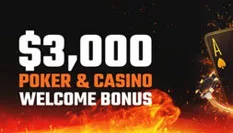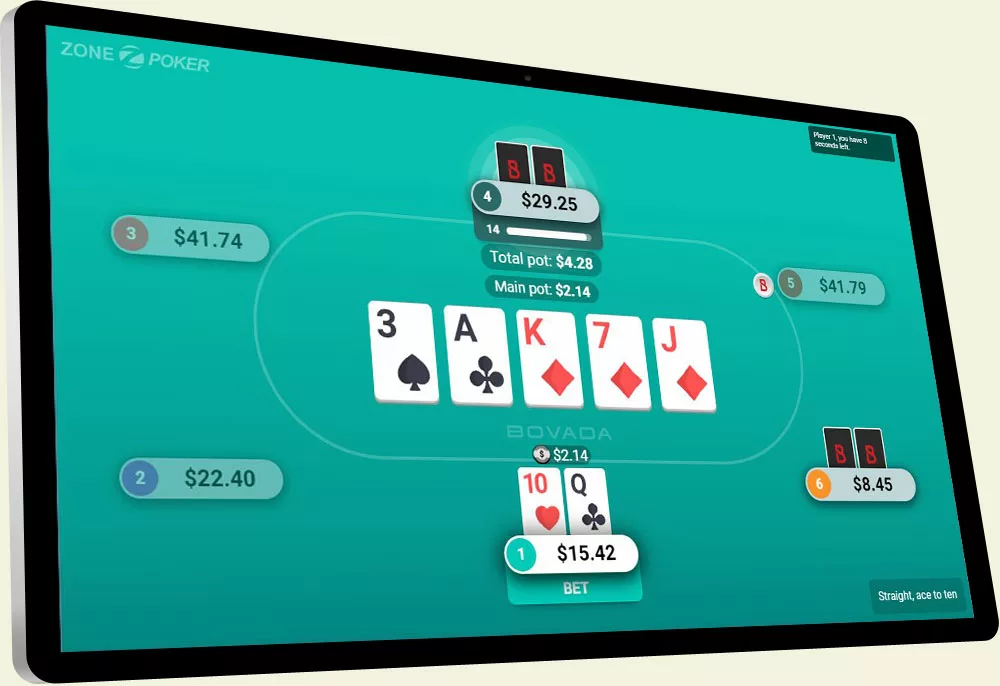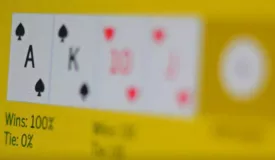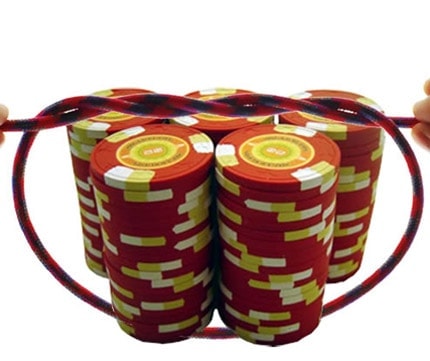
The live straddle, more commonly referred to simply as straddle, is one of the best known features of live cash games.
Although some online rooms have enabled straddle option as well, it remains predominantly something you expect to see in a brick and mortar casino.
This article will aim to explain everything you ever wanted to know about the straddle: what it is, how it works, and what types of straddle you can encounter at the table.
We will also look into some strategic considerations and try to answer the question that has divvied up poker players for a long time now:
To straddle or not to straddle?
Table of Contents
Live straddle explained
If you are new to the game of poker, you may have seen the TV players straddling and may have wondered what it was all about. The good news is, the concept is very simple in its essence.
A live straddle is basically an extra blind posted by the player (or players) sitting to the immediate left of the big blind (UTG).
The straddling player needs to double the amount of the big blind. Depending on the game, there can be more than one straddle in any given hand.
For example:
- SB: $1
- BB: $2
- First straddle: $4
- Second straddle 2: $8
- Third straddle 3: $16
Every subsequent player doubles the amount posted by a player to his immediate left. Straddles can extend all the way to the button player in especially crazy games.
The last player to place the straddle will get to act last pre-flop, since the action starts with the first player to the left of the last straddle.
So, to point out the obvious:
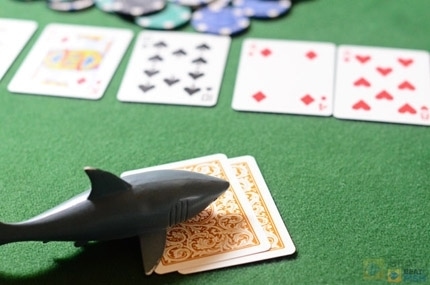
Straddles are great for table action, as they effectively create bigger games and help build the pots.
They are especially cool for televised poker because, let’s face it, we don’t want to see cautious, correctly played poker.
We want action!
That said, when you sit down to play in your local game, you will need to be very careful about what’s going on at the table.
If you’ve come to play $1/$2 and there are regularly two or three straddles going on, you need to understand that the game has just become much bigger and adjust accordingly.
Straddle: strategic considerations
Let us first discuss the immediate implications of the live straddle.
If you decide to put in the straddle, you will be placing double the big blind completely devoid of information.
Most of the time, you will receive a weak hand (just as you would if you hadn’t played the straddle) and will be putting in two (or four) big blinds completely in the dark.
The fact you will get to act last before the flop is not enough of a compensation. You would need much more than that to waste two big blinds every round.
When does straddling make sense?
There are certain situations where it can make sense to straddle, either because of the game flow or because of the math – and sometimes – both. Live poker straddle is not something you should avoid at all costs, but you need to be aware of everything that’s going on at the table.
So, straddling makes sense when:
Your straddle will trigger one or more re-straddles
Sometimes, your local game will go completely insane.
People will just want action, be it because of a few splashy guys jumping in or people simply looking to gamble. Whatever the reason, every now and then you will find yourself at the table just going crazy with straddles.
If you’re straddling for $4 in a usual $1/$2 game will cause the next player to put in $8 and possibly the guy next to him to commit $16, then you should definitely do it. Yes, you are putting in some money in the dark, but if you know that others will put in even more money blindly, your equity increases.
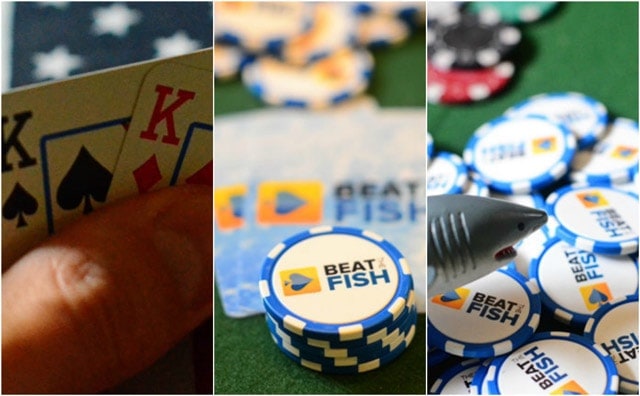
This is especially true if you are a good player and usually beat the game. The kind of setup where people put in a bunch of money in the pot without any information will definitely work in your favor. If you straddling will encourage them to do so, you would be doing yourself a disservice by not pulling the gun.
There is an action-loving fish at the table
Whether it is a regular player in your local game or someone who just appeared from nowhere, a player looking to gamble without really knowing much about poker is the perfect customer. The problem is, this type of player is not interested in limping in, seeing cheap flops, etc.
He wants action. And action you shall provide.
You know the type of player willing to commit 200 big blinds chasing a flush draw to the river? You want to make it easy for him to put his chips in the middle. If live straddle is the way to do it, so be it. Even if others are not doing it, as long as it is allowed, feel free to start.
There are decent odds that the action-seeking player will see you as someone willing to gamble it up with him. In fact, if you are at the table full of nits and you two are the only ones straddling, he might focus his attention on getting involved in pots with you with subpar holdings even for his standards.
Often when you give action you will receive action.
The skill gap between you and this type of the player should more than make up for the extra money you put in the middle before the flop as well as positional disadvantage. If he happens to be to your immediate right, even better, because then you will straddle on his big blind, securing you have a position on all streets.
When everybody else is straddling
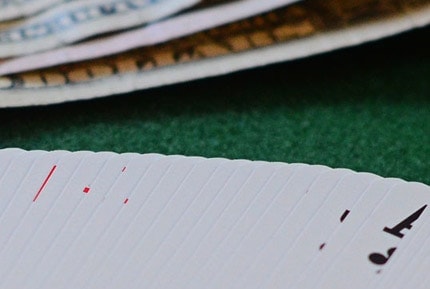
This one is up for the debate since no one can force you to straddle as long as the limits remain unchanged.
However, if everybody’s doing it, you can go ahead and do it, without losing any equity.
The only thing you need to be mindful of is the fact that the game where everyone is straddling is, in fact, the next level game.
What I mean by this is, you are no longer playing $1/$2 but rather $2/$4. The stack-to-pot ratio will be much smaller, making effective stacks much shallower.
There is nothing wrong with this, as long as you are bankrolled to play in a game like this.
Keep in mind that even if you refuse to straddle, if others are doing it, the game is effectively bigger, so your bankroll is at greater risk and strategic adjustments are necessary.
If things are getting out of control too much for your taste, don’t be shy to get up and walk away. You shouldn’t feel obliged to play in a game that you are not comfortable with.
You are there either to make money or have fun. If big bets and huge pots are making you feel out of place, it is time to call it a night or find a game more fitting to your bankroll and your playing preferences.
Not all straddles were created equal
Apart from your common variety straddle, there are a few other variations that you will see from time to time. Sometimes, they are local derivations or subtypes of the common ones, so you will need to get yourself acquainted with local rules and customs.
However:
Most games stick to regular straddles and some of them allow for Mississippi straddle and/or sleeper straddle.
Mississippi straddle
The Mississippi straddle is not something you will encounter that much. It is usually featured in the games with a lot of regulars who can come to an agreement about it.
The reason?
This form of straddle can quickly spin the game out of control. Unlike traditional straddle, posted by a UTG player, Mississipi can be placed by any position at the table.
When played, this straddle will force the opponent to the left of the last poster to act first as the straddler will usually have the last say preflop when the action gets back to him.
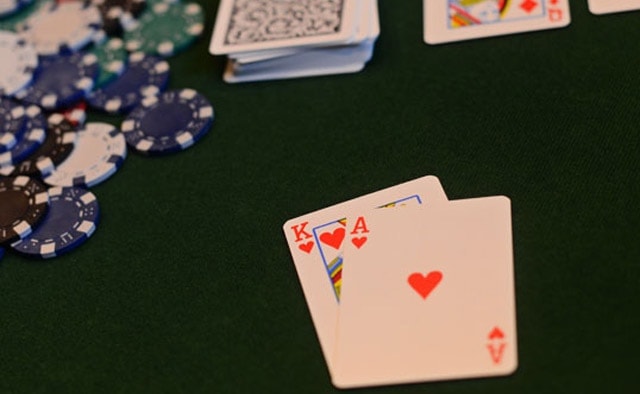
Sleeper straddle
Of the three, sleeper straddle is the most fast and furious one. This is a blind raise that can be for any amount and can be placed by any player at the table. The rule is, if there is no action before the sleeper (i.e. all players fold), the raise stands.
If, on the other hand, there is even a single limper before the action gets to the straddling player, he or she is allowed to take their chips back and the hand plays as if there were no straddle to begin with.
Unlike other two, which can be advantageous in some scenarios, the only purpose of the sleeper is to create action and gamble it up. You will usually see a sleeper requests coming from the guy who is there to gamble and the action is not fast enough or someone who is stuck big and is looking to turn the things around, even if only by blind luck.
What to keep in mind on straddling in poker
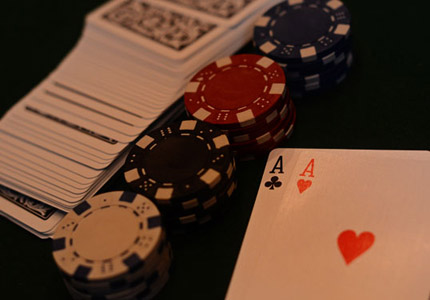
Live straddle in poker certainly has its place in the games. It can help create the action, liven up the games, and help experienced players take chips from maniacs faster.
When applied sensibly, straddle can be a dangerous weapon against weaker opponents.
However, in many cases, it is simply used as an excuse to gamble it up and make the game bigger.
If you can’t find a real reason why you should straddle, you should avoid doing it altogether. Don’t try and make excuses where there are none.
Of course, everyone’s allowed to have some fun, so if you feel like gambling and want to do it for that particular reason – go right ahead. It’s not going to make you or break you.
Just keep in mind that apart from a few scenarios described in this article (and maybe one or two more), live straddle will be a losing play.
That said, are we doing a round of straddles or what? And where is my beer?

